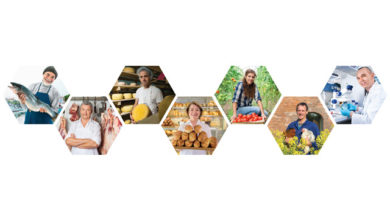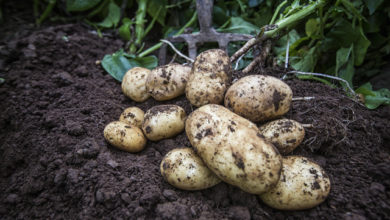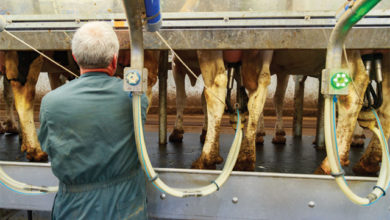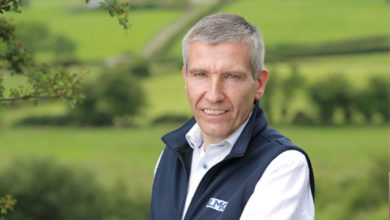The future economic direction of travel for agriculture in Northern Ireland
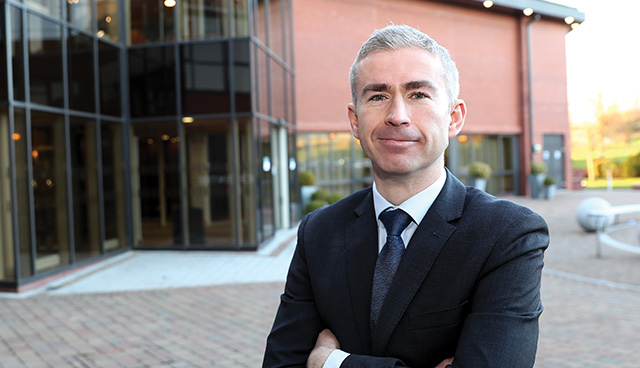
The current weakness of sterling against many of the world’s leading currencies is helping to boost food exports from the UK to the eurozone and beyond, according to Michael Haverty, a Senior Agricultural Economist with The Andersons Centre UK.
“This is having a beneficial impact on farm incomes,” he says. “The past year has seen a significant rise in farm incomes throughout the UK and, particularly, in Northern Ireland.”
Haverty was a speaker at the 2018 agendaNi Agribusiness Conference. He confirmed that Total Income from Farming (TIFF) in Northern Ireland had increased to £473 million in 2017, up from £253 million during the previous 12 months. The TIFF for UK farming as a whole in 2017 came in at £4.7 billion.
“From the perspective of Northern Ireland, the figures represent a year-on-year increase of almost 87 per cent. It is also significant that the total turnover generated by agriculture in Northern Ireland broke through the £2 billion barrier for the first time in 2017.”
Commenting on the future of the farm support arrangement that will be available in the UK post-Brexit, Haverty explained that CAP rules may well apply throughout the five year transition currently being talked about between London and Brussels.
“The UK will pay into the EU’s coffers throughout the transition period,” he says. “This will mean that farmers in Northern Ireland will be subject to the rules applying to the Common Agricultural Policy, while receiving the support payments on offer to other farmers in the EU-27.
“However, by 2023 we will see the UK having a greater say in the way that farm support policy is formulated and structured.
“Based on the current policy statements coming from DEFRA Secretary of State Michael Gove, direct payments to farmers will cease in 2025.”
Haverty highlights the absolute necessity for the UK to secure a trade deal with the EU, as part of the Brexit process: “One of the big consequences of a bad deal, or no deal at all, being secured is the projected downturn in farm gate prices that will kick-in once the transition period is over.
“Projections prepared by analysts at the Andersons Centre indicate that milk prices alone could fall by in excess of 4.2 pence per litre, purely on the back of the wrong Brexit deal being arrived at.”
However, Haverty believes that both the UK and EU-27 want to arrive at a free-trade agreement post-Brexit. He adds: “That could take a long number of years to complete. In the case of the trade deal between Canada and the EU, it took seven years to finalise that arrangement.”
The Andersons Centre representative confirmed that the actual exit agreement for the UK requires a qualified majority at EU-27 member state level to get it over the line. However, the securement of a free trade deal will require unanimous agreement across the EU-27, with some member states holding a referendum on the matter.
Linking the concept of a hard Brexit with an expectation of significant cuts in Whitehall’s future commitment to support agriculture, he says: “The reverse may well be the case if we arrive at a soft Brexit arrangement but there will be flexibility to allow regional administrations to top-up future national farm support commitments.”
Haverty forecasts that sterling will remain weak relative to the euro over the coming months but admits that could change if the Brexit negotiations throw up issues that have not been factored into current projections.
Pointing out that the proposed ‘Great Repeal Bill’, the instrument which the UK government intends to use to disentangle itself legally from the EU, will ensure that European statutes and quality standards will effectively remain in place for farmers in Northern Ireland and GB for quite a number of years. He adds: “Matters such as the current three-crop rule, part of the current CAP requirement for tillage farmers, could be repealed quite quickly.
“However, the reality is that it will take quite a long time for successive British governments to amend existing EU statutes into national legislation that more fully reflect the needs of farmers throughout the UK.”
Haverty suggests that special arrangements will be put in place for the island of Ireland in the context of the Brexit negotiations.
“Milk prices alone could fall by in excess of 4.2 pence per litre, purely on the back of the wrong Brexit deal.”
“Agreement on TRQs involving Ireland and the UK is one obvious way of dealing with trade related relationships,” he says. “The continuation of the Common Travel Area is a likely runner. There may be even special EU membership status given to citizens of Northern Ireland.”
Modelling carried out by Haverty indicates that beef and sheep enterprises in the UK will be worst affected by the Brexit process.
“These farms are extremely reliant on the support currently available by way of the basic payment scheme. If this level of subsidy were to be cut, this would impact dramatically on the bottom line of these businesses.”
In contrast, Haverty thinks that dairy farming operations could well survive in a post-Brexit scenario: “Here, the big challenge will remain the spectre of volatility, which is really an international problem.
“Improving efficiency will remain a key goal for dairy farmers in the UK, irrespective of whether or not the country is inside or outside of the EU.”
According to Haverty one of the big imponderables moving forward is gauging how much emphasis will actually be placed on farming and food within the context of the Brexit talks.
“In overall terms, agriculture accounts for a relatively small proportion of British economic output,” he says. “Obviously, this is not the case in regions like Northern Ireland. So it’s important for the farming sectors to ensure they find a way of communicating their priorities in the most effective way during the negotiations that will get underway in the very near future.”
Looking beyond 2025, Haverty explains that farmers in the UK may well have some fundamental decisions to make: “Using our current assumptions and modelling, in 2027 TIFF would fall form £7.4 billion to between £4.7 billion and £2.0 billion.
“The question then becomes: will farmers accept lower returns for the same effort or adjust efforts for the same returns. I sense the latter will be the case.”
He believes there are lots of areas where primary producers can secure gains: “The starting point for most farmers is to assess what their counterparts in the top 10 per cent benchmark category are actually doing.
“There is also scope for primary producers to get closer to end markets and to become involved in food chain co-operation.
“The forging of joint ventures also opens up significant potential for farming as a whole. Better grassland management and smarter purchasing practises should be made priorities for every farming business.”
However, for this to occur, farmers must change their approach and mind set from one that is currently production led to one that is marketing-led.
“Industry can do much right now to improve its overall level of performance but farmers must make a conscious decision to view change as a positive development and opportunity to further allow them develop their businesses.
“Brexit will, undoubtedly, throw up challenges but farm stakeholder groups will have an opportunity to influence policy moving forward. There are also a number of bespoke solutions that recognise Northern Ireland as a special region, from a Brexit point-of-view.”



